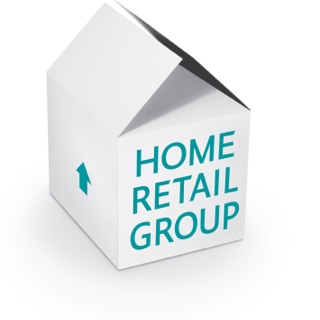Title Page
-
Facility Name
-
Prepared by
-
Conducted on
-
Facility Type
- Water Pump Station
- Sewer Lift Station
- Vault
- Meter Pit
- Water Treatment Plant
- Sewer Treatment Plant
- Chemical Building/Chemical offloading
- Power Generation
- Power Distrtibution
Facility Inspection
General Work Area/Conditions
-
Site orientation materials for visitors are available and current
-
Areas where people will walk or work are free of weeds/debris
-
Ladders/Guardrails/Handrails in good condition
-
Access/Egress points clear of obstruction
-
All walking-working surfaces such as stairs, aisles, and walkways free of obstructions or slip, trip, fall hazards
-
Exterior of facility generally clean and orderly
-
Interior of facility generally clean and orderly
-
Areas where people will walk or work are adequately illuminated to safely operate after dark
-
All floor holes, ladder access and wall openings are guarded or barricaded to prevent a fall
-
Safety equipment such as, safety showers, eyelashes, emergency stops, fire alarm, fire extinguishers, and medical supplies are unobstructed
-
Waste receptacles clean, adequately segregated, and not overflowing
-
General housekeeping is overall good condition
Emergency Response/First Aid
-
First Aid kit on-site and stocked
-
Shower/Eyewash stations accessible and inspected monthly
-
Emergency evacuation routes posted
-
Exits clearly marked
-
AEDs operational and inspected monthly
-
Emergency Response Plan (ERP) on-site with up-to-date information
-
Emergency Response Plan (ERP) is uploaded into MapCall and current
Security
-
Visitor access control in place (sign-in, site briefing, who’s on site)
-
Perimeter of site barricaded or otherwise protected
-
Fencing/Gates in acceptable condition
-
No Tespassing signs posted on outside of structure
-
All doors, hatches, opening, etc. properly secured
-
Facility/Equipment monitored via SCADA
Fire Safety
-
Fire alarm system certified and tested annually
-
Sprinkler systems are not obstructed and are maintained and inspected
-
Flammable materials stored in flammable storage cabinet
-
Flammable storage cabinets properly maintained
-
No combustible or flammable materials stored near electrical breakers
-
Stockpiling of combustible materials prevented
-
Fire extinguishers accessible and appropriate class for present hazards
-
Fire extinguisher locations visibly marked and unobstructed
-
Monthly fire extinguisher inspections documented
-
Designated Hot Work areas are labeled and free of combustibles and flammables
-
Demonstrated consistent use of Hot Work permit in MapCall and adherence to process
Personal Protective Equipment
-
Signs with required PPE posted
-
Supply of required PPE stocked
-
PPE stored properly
-
PPE cleaning supplies available where shared PPE is used
-
Documentation of PPE inspections available for high voltage gloves, body harnesses, and non-disposable respirators
Chemical Storage/HAZCOM
-
Chemicals/materials properly stored and maintained
-
Chemical containers labeled legibly
-
SDSs accessible and up-to-date
-
Appropriate chemical hazard warning signs posted
-
Emergency spill/repair kits readily accessible and equipped for the appropriate volume
-
Area clean and free of chemical spills
-
Incompatible materials stored separately
-
Chemical containers closed and secured when not in use
-
Chemical containers in good conditions and free of leaks
-
Compressed gas cylinders secured and stored properly
-
Secondary containment in good condition
-
Chemical waste is labeled and dated, segregated, inspected, and disposed of in accordance with state regulations
-
Proper documentation of disposed material
-
Chemical fill lines locked when not in use
-
Confirmation that chemicals are received in accordance with practice
-
Alarm asset records (Cl2, O3, O2, etc.) reviewed in MapCall with demonstrated adhereance to PM schedule and are in proper working order
Equipment/Tools
-
Hand tools in good condition
-
Equipment and tools are free from dirt, visible leaves, and working properly
-
No broken, damaged, or worn tools present
-
Electrical cabinets/equipment in good condition and labeled
-
Extension cords of the proper type and size used and in good condition
-
Extension cords are elevated where possible
-
Extension cords are not run through ceilings, walls, or doorways
-
Extension cords which cross walkways are securred
-
Extension cords which cross vehicle paths are shielded
-
GFCI adapters, pigtails or power strips are in use where GFCI circuit breakers are not installed
-
Voltage posted on electrical components
-
Live electrical components properly guarded
-
All moving/rotating parts properly guarded and any manufacturer guards remain in place
-
Equipment/machinery securely placed/anchored
-
Manufacturer’s manuals available on-site for powered equipment
-
ARC flash labeling in place an current
-
Equipment stored further than 3-ft from electrical panels
Confined Space
-
All permit-required confined spaces physically labled and identified on the site inventory list
-
All confined space air monitoring equipment is inventoried in MapCall and calibration is up to date
-
Exhaust fans functioning properly
-
Access to all permit required confined spaces are guarded
-
Emergency retrieval equipment in good condition
-
Rescue services identified
-
Demonstrated consistent use of confined space form in MapCall and adherence to process
Vehicle/Motorized Equipment
-
Vehicles clean and well organized
-
Annual DOT inspection current
-
Daily inspections completed and recorded
-
All safety features functioning (backup alarms, lights, brakes, etc.)
-
Appropriate traffic control equipment available
OSHA Training
-
Employee on-site were current with all required OSHA training (cross-check with LEARN)

















